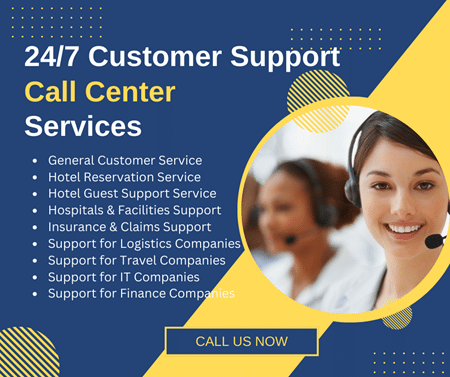Are you struggling to provide technical support to customers? Is customer retention a persistent problem? Do your employees find it challenging to use the ticketing software? Is the lack of quality customer support affecting your bottom line?
If yes, you need to revisit your help desk system. The system must be customer-centric. It should also make it easier for employees to access information and answer questions correctly and quickly.
If you are crunched for resources, consider partnering with an MSP and exploring their outsourced helpdesk services.
Let us look at 12 key steps that can elevate the type of support your organization provides.
If you aim to achieve customer satisfaction, meet SLAs, lower training costs, and improve productivity, the below practices are a good starting point.
- Optimize Existing Processes
- Define SLAs
- Invest in Easy-To-Use Software
- Encourage Ticket Documentation
- Enable Collaboration
- Centralize Information
- Personalize Customer Experiences
- Capture and Implement Customer Feedback
- Performance Analysis
- Steady Growth Rate
- Automate Repetitive Tasks
- Outsource to an MSP
1. Optimize Existing Processes
Instead of starting from scratch, see how you can improve the existing help desk system. Switching to a new system can be difficult for employees and customers.
You must invest time, effort, and money into re-training employees. Your customers can get annoyed as they have to adjust to a new process when they are already in need of help.
Thus, look at software or practices to help you get the most out of your existing customer support process.
2. Define SLAs
Provide employees with clear SLAs and metrics to meet. These SLAs need to be in line with business objectives. For example, your goal could be to improve customer experience by quickly resolving issues. So SLAs like response time, resolution time, or first contact resolution can help.
Defining these SLAs provide direction to employees and sets expectations for customers. In addition, it can be used to measure performance and identify improvement areas.
3. Invest in Easy-To-Use Software
Customers interact with your business through the help desk system. Employees use the same system to receive, respond to, track, and resolve user queries.
If the software is too complex, it hinders support agents from performing their jobs efficiently. This, in turn, affects customers as the quality of service drops.
Invest in software that is easy to use, learn and integrate into your existing customer support framework.
4. Encourage Ticket Documentation
Right from when a ticket is opened, information like the issue, customer expectation, priority, action taken, and status, among others, should be documented.
If the customer calls for a follow-up, any support agent accessing the ticket can provide accurate details.
Once the ticket is resolved, the resolution steps can be a part of the knowledge library. Other agents can use the information to solve similar issues. This can reduce resolution time and improve customer experience.
5. Enable Collaboration
Imagine from a customer’s perspective – you raise a complaint, and the ticket keeps getting re-routed with no resolution. You are bound to get frustrated.
The help desk infrastructure should enable collaboration among cross-functional teams. For example, support agents from different teams should be able to open tickets, check details, and update.
It can help avoid issues like providing a customer with conflicting information. As a brand, you must present a united front to earn and keep your customers trust.
6. Centralize Information
Practices like ticket documentation and collaboration can be taken to the next level with centralized storage and access. Knowledge sharing is essential for a business to deliver consistent results.
New support agents can have a shorter learning curve with access to a centralized knowledge database. Again, this is time and effort-saving.
7. Personalize Customer Experiences
Customer expectations have evolved to an all-time. According to a Salesforce report, customers expect connected journeys, personalization, innovation, and data protection. 66% of customers want to be treated as unique individuals. The same percentage of people, though, feel that companies treat them as mere numbers.
Treat every ticket as a one-on-one conversation with the customer. A simple gesture like addressing the customer by name can go a long way. Train customer executives to actively listen during calls, understand expectations, and document.
8. Capture and Implement Customer Feedback
The whole point of having a help desk system is to tend to customer queries. Customers must be satisfied with the quality of service offered. If they are not, you need to listen to their grievances and identify how you can do better.
The system you use should send automatic feedback requests once the ticket is closed. It could be in the form of an email, message, or call.
The answers can help measure performance. When you acknowledge feedback, take action and improve, customers know their opinions are valued.
9. Performance Analysis
When trying to achieve a business objective, it is crucial to plan, measure and revise along the way. To improve customer service, you first need to know where you stand on the metric scale.
For example, you can measure performance using customer support metrics like ticket volume, ticket distribution, response time, backlog, resolution time, and customer satisfaction ratings.
10. Steady Growth Rate
Every business wants to offer the best possible customer service. Improving customer service is a good objective, but the objective needs to be broken into small measurable tasks.
You cannot change your support infrastructure and expect employees to improve overnight. Changing too much too soon can overburden resources. This will reflect in the quality of service provided, and your customer will be affected.
Thus aim for steady growth over time.
11. Automate Repetitive Tasks
In case of any repetitive tasks that are done after every ticket assignment or resolution, automate them. It saves time and helps provide consistent service to customers.
For example, when a ticket is assigned, an automated mailer saying, ‘the ticket has been acknowledged and assigned to XYZ, and they would be reaching out to you in this time slot.’ It could be mailers whenever the ticket is updated or conversation templates for known issues.
This practice helps employees while offering transparency to customers.
12. Outsource to an MSP
If you do not have the resources to maintain a dedicated customer support team, an MSP can help. MSPs offer a range of IT services like application management, outsourced help desk services, after-hours support, cloud security, and more.
You can communicate your expectations, SLAs, and metrics. Then, together with the MSP, you can develop a flexible plan that aligns with your business objectives.
Summary
Your help desk system is how customers interact with your company. Therefore, it must reflect your brand’s values, morals, and service standards.
Customers are the core of your business, but also understand that providing employees with a robust IT infrastructure helps them complete their responsibilities and serve customers better.
You can either begin executing the key steps mentioned above or contact the help desk for MSP to learn about the tailored IT services available.







